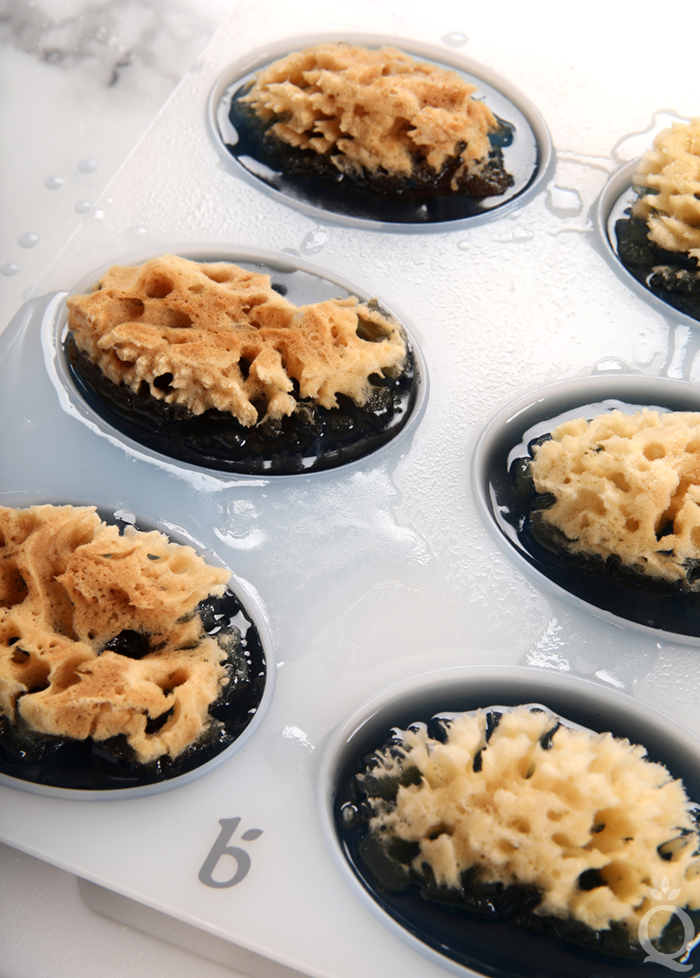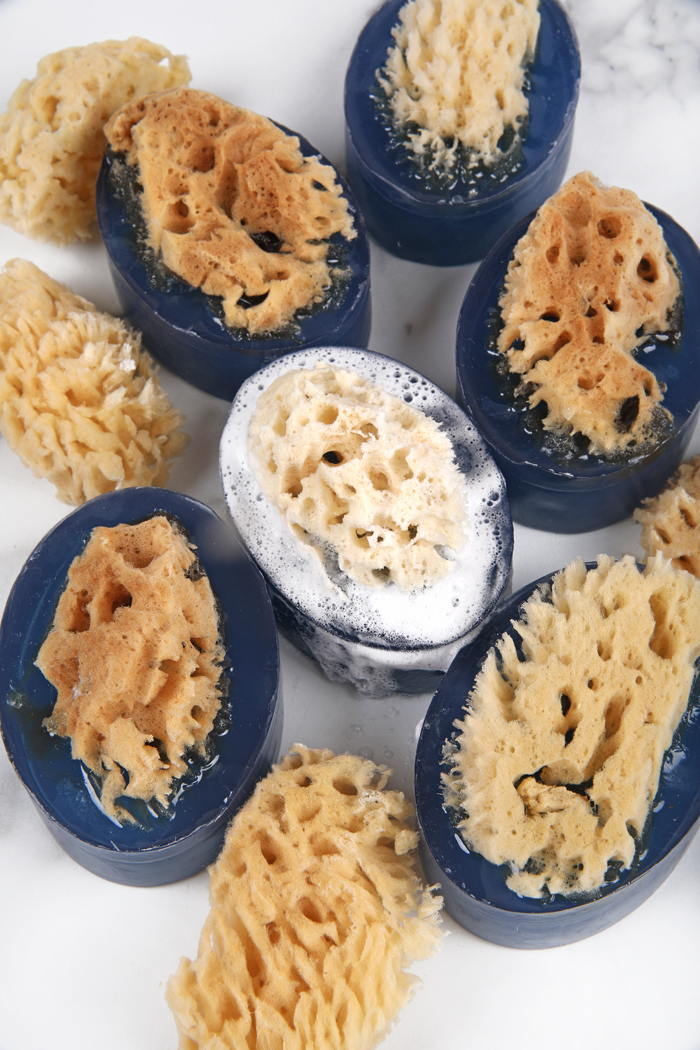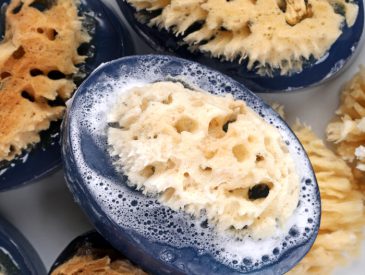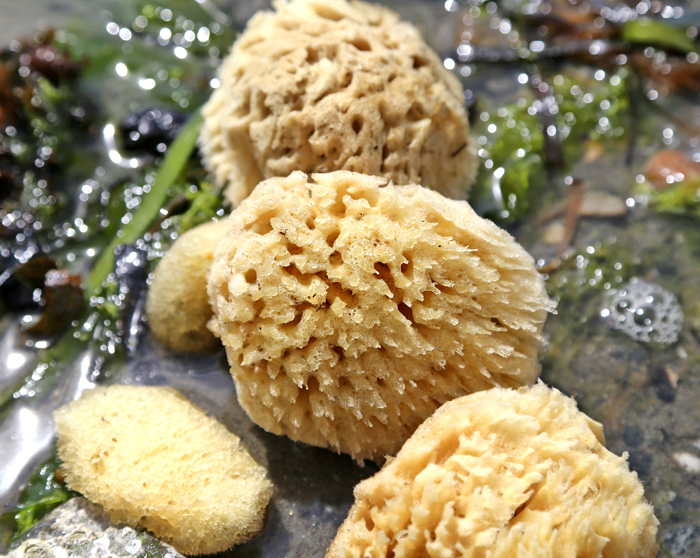
If you haven’t tried new sea sponges, you’re in for a treat. They’re used in soap because they create amazing lather – no washcloth necessary.
Where they’re from
There are more than 5,000 species of sea sponges that grow in both polar and tropical areas. The wool sponge we carry comes from the Bahamas, and the silk sponge comes from the Philippines. They’re a part of the new Seascape Collection.
Before the sea sponges make it to homes all over the world, they’re harvested by specially-trained divers. They use hooks to remove the sponges from rock and coral and then bring them back up to the boats. Workers run a string through and hang them to dry. The sponges are covered in a black film, but exposure to the sun causes it to dry and fall off. Then, the sponges are washed a few times and prepared for shipping.
The best part about that process is it’s sustainable. The divers don’t cut all the way down to the rock, which means the sponges will grow again. Once they’re harvested, divers move so it doesn’t overburden one area.
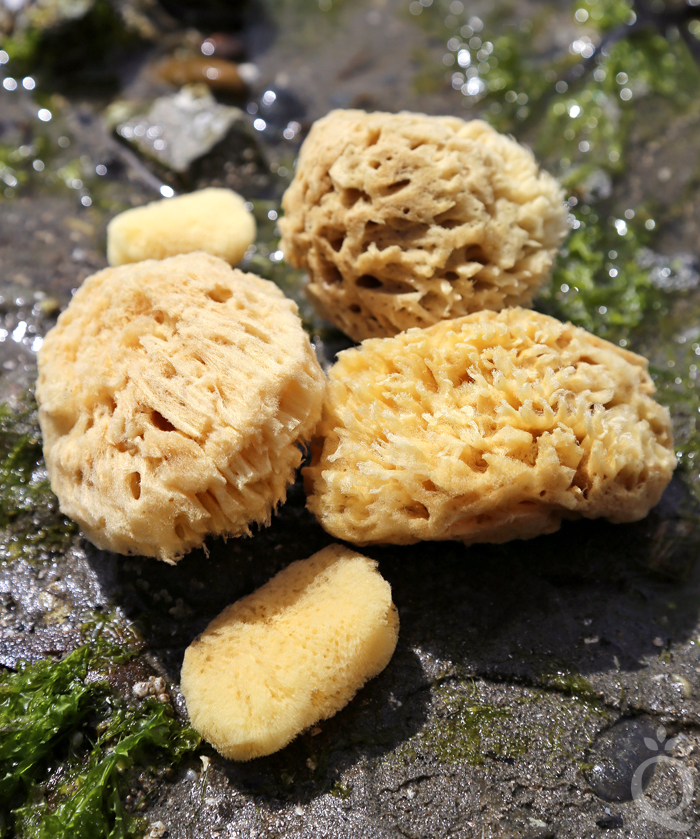
It’s a similar method used by our vendor when they first started. They’ve been diving for sea sponges since the 1940s. Employee Jim said his father, George, would dive for the sponges near a small island called Lemnos in the north Aegean Sea. George and his brothers would gather people from the town and go out on the boats for a week, collecting as many sponges as they could.
“They’d bring them in and sell them throughout Greece,” Jim said.
In the 1950s, George moved to the United States. His brothers shipped the sponges from Lemnos and he would sell them across the country. George is still active in the family business today, and Jim has been working with him since 1975.
How to use them
The sponges can be used to clean windows, apply wallpaper glue, apply paint, and more. Of course, we love them in bath products.
The silk sea sponge is small, slightly firm, and about 1.5-2″ across. The wool sponge is softer, larger, and about 3-3.5″ across. Both have a luxurious, soft feeling on the skin.
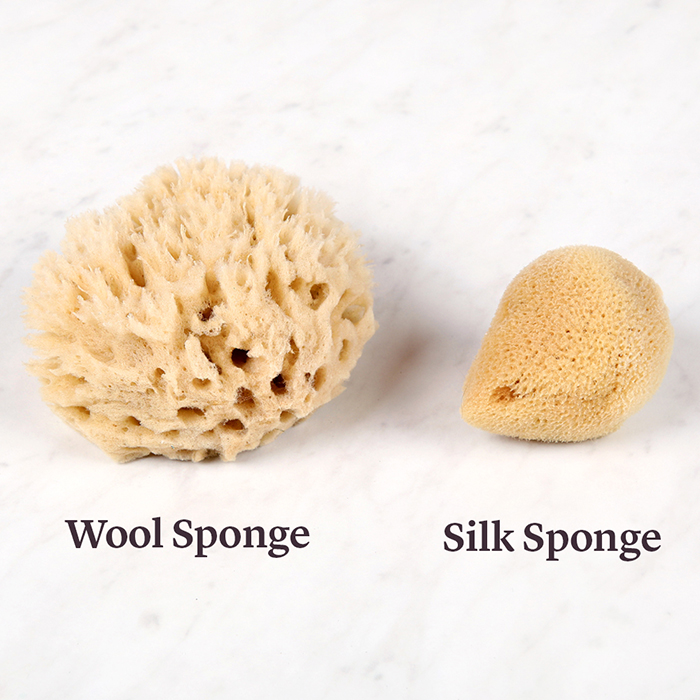
They’re super easy to use. First, pour soap into a mold. Melt and pour needs to be around 130-135F and cold process needs to be at a thin/medium trace. Place the sponges in the soap securely and make sure to leave a portion sticking out of the bars so it creates lather. You can cut the sponges to fit if necessary.
Sea Sponge Spotlight
Click here to add the sea sponges to your Bramble Berry shopping cart.
Inspiration
We show you how to work with them two ways. The Sea Sponge Melt and Pour Soap is nice and simple. Clear Melt and Pour is colored with jagua blue extract and scented with Midnight Waters Fragrance Oil. That’s poured into the 6 Bar Silicone Oval Mold and topped with a wool sponge.
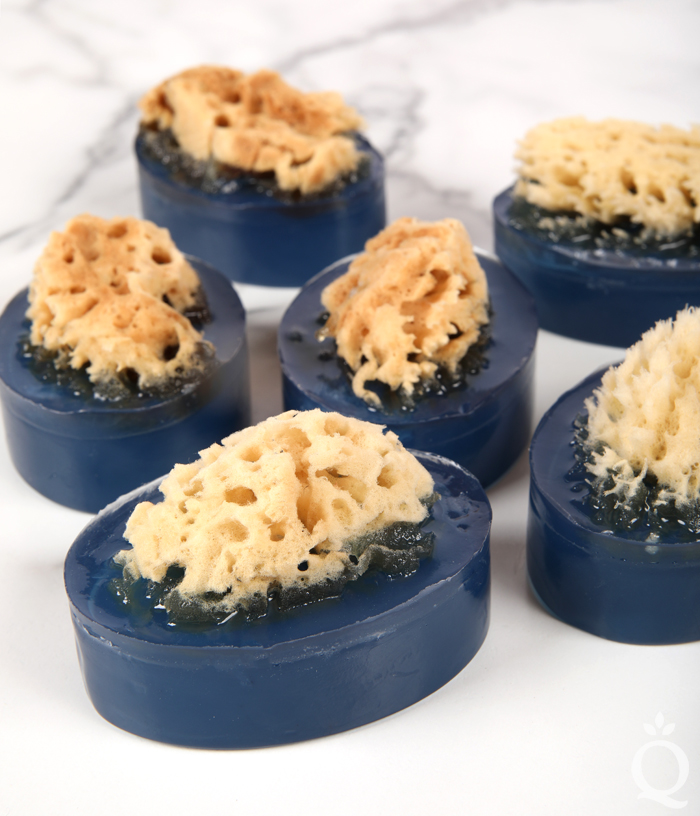
The Sea Sponge Cold Process Soap is made with the smaller silk sponge. They’re embedded into swirly soap made with jagua blue extract and Sea Salt Fragrance Oil.

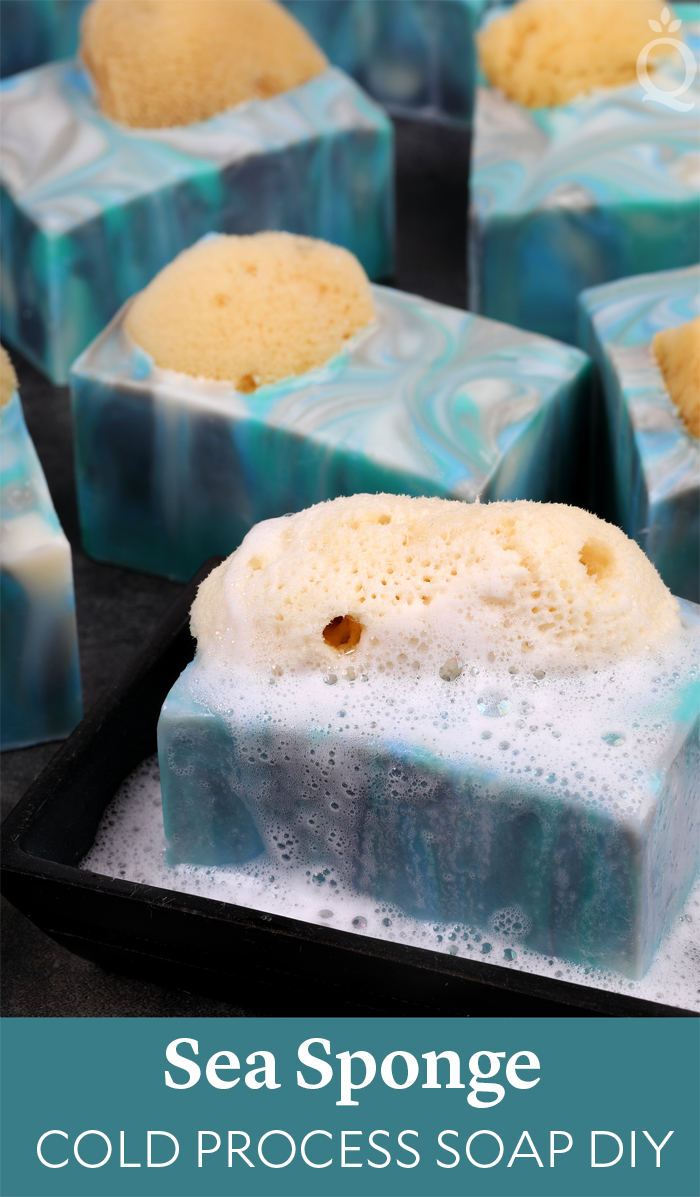
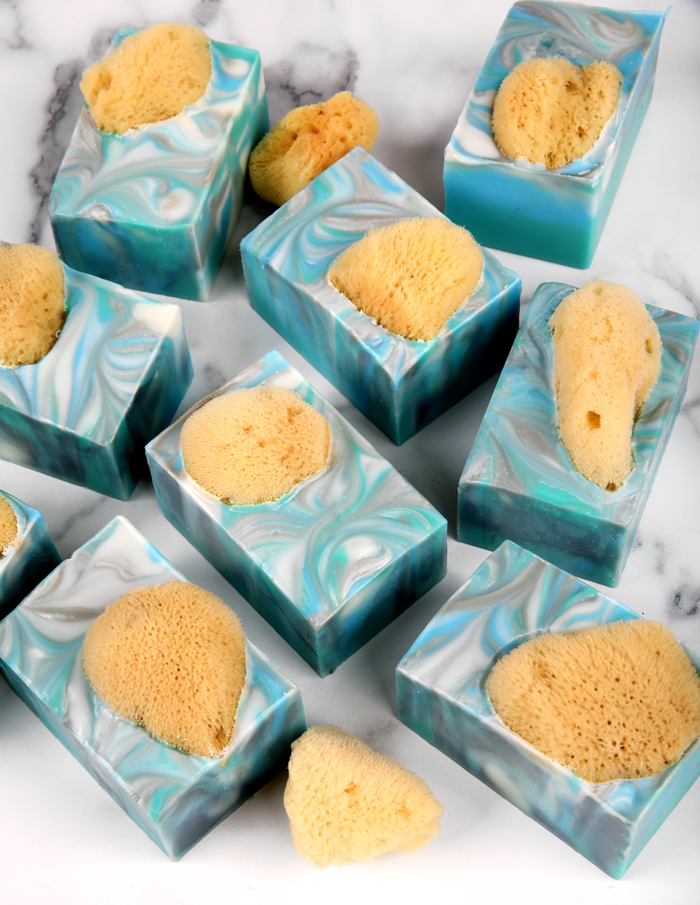
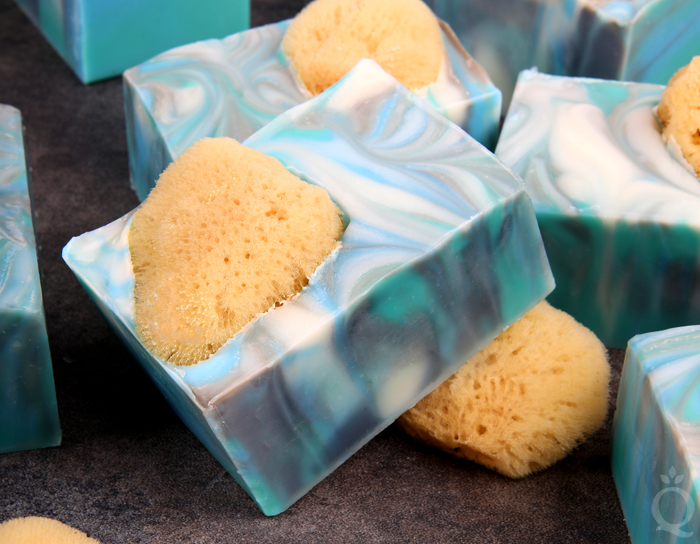 The
The 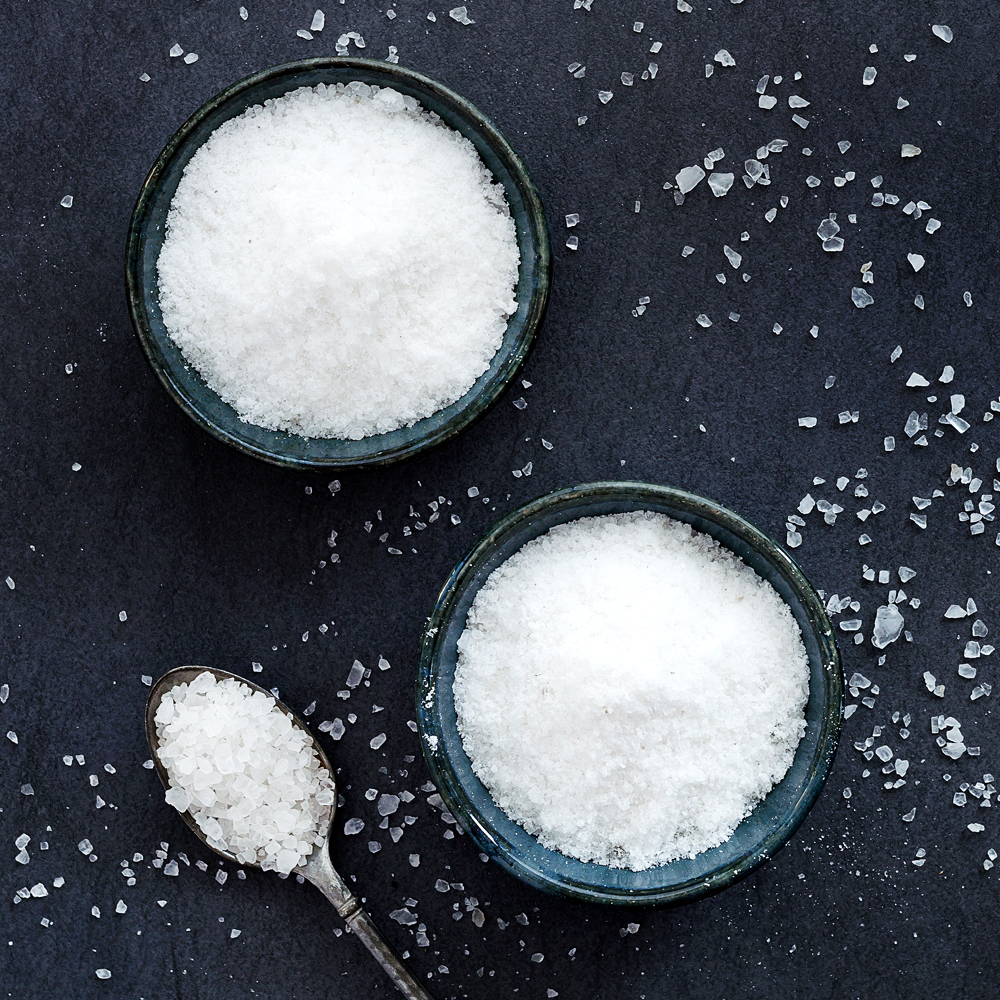

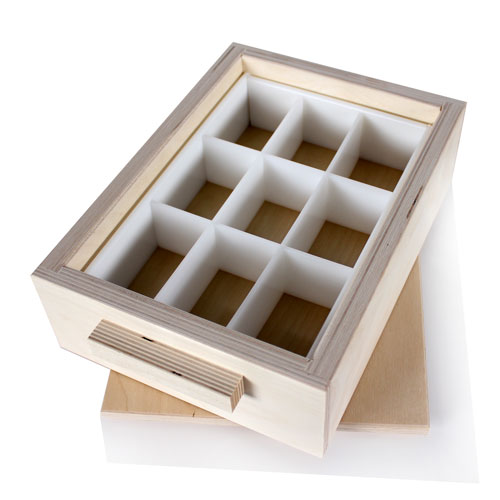
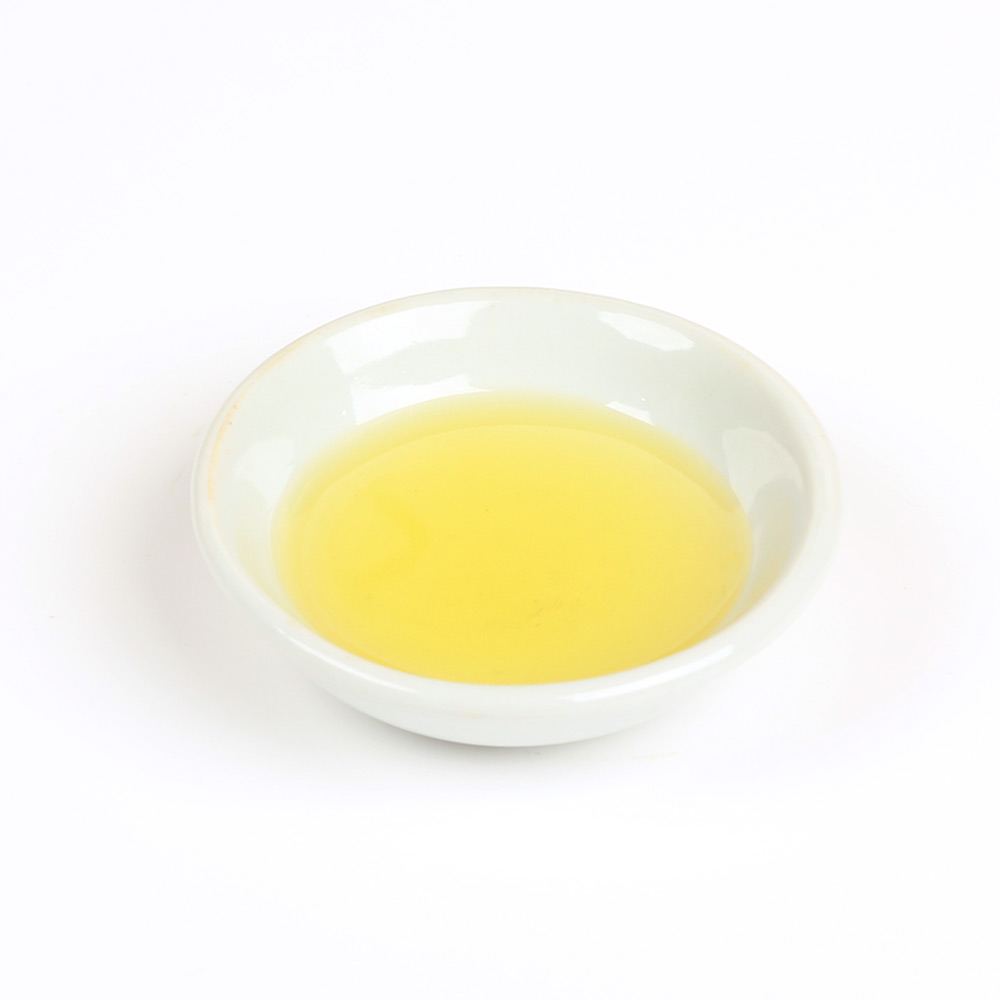
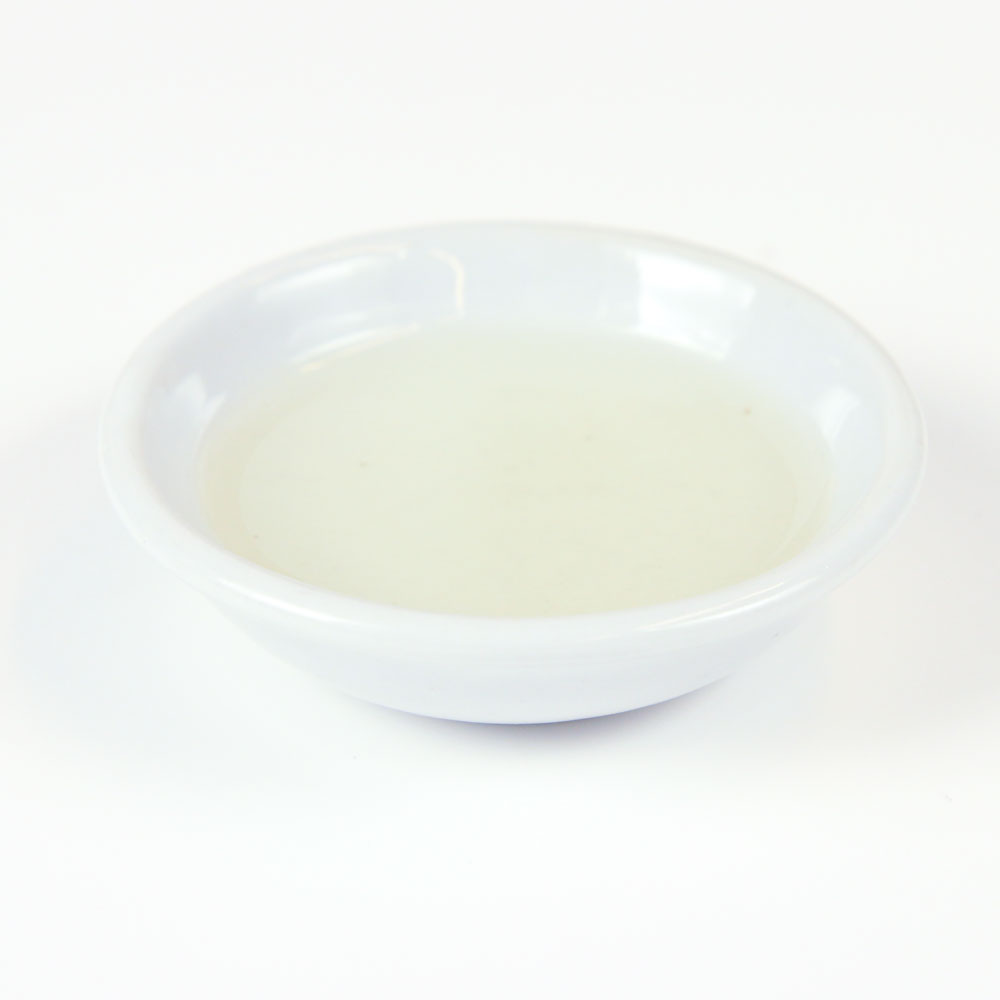
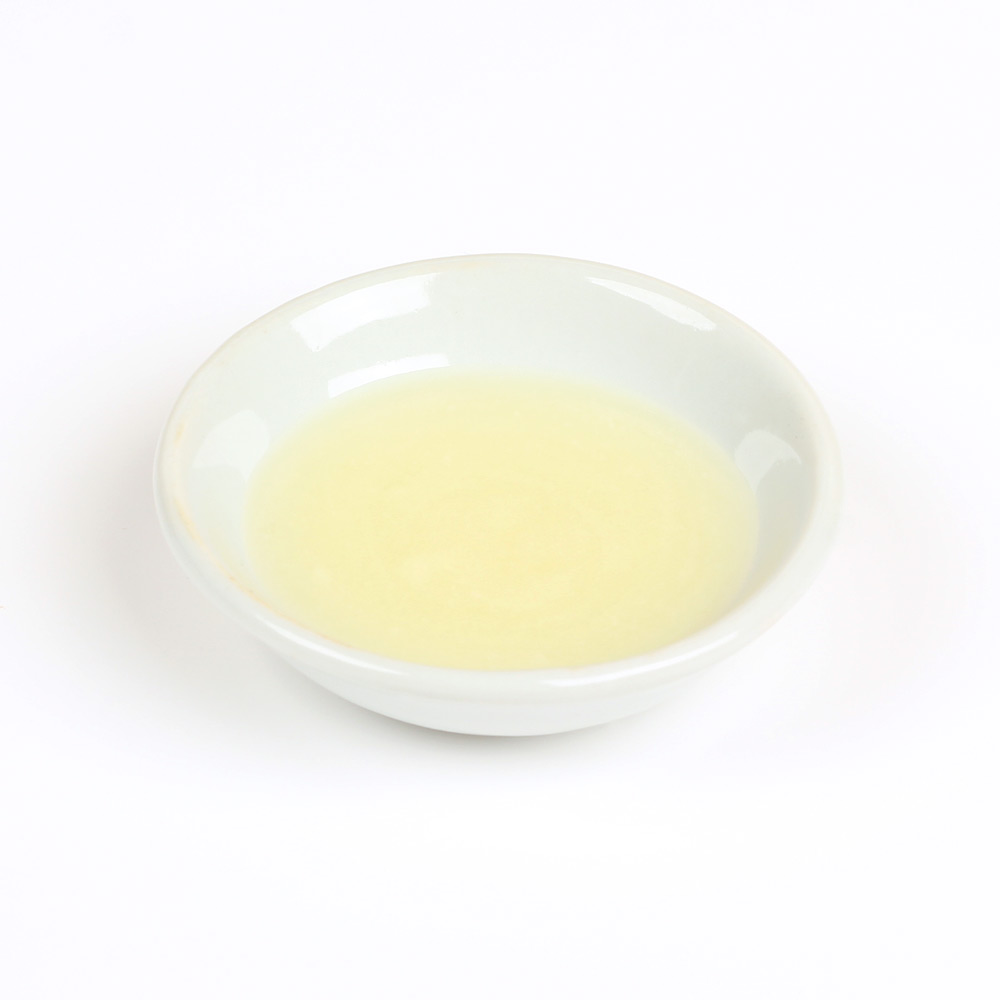
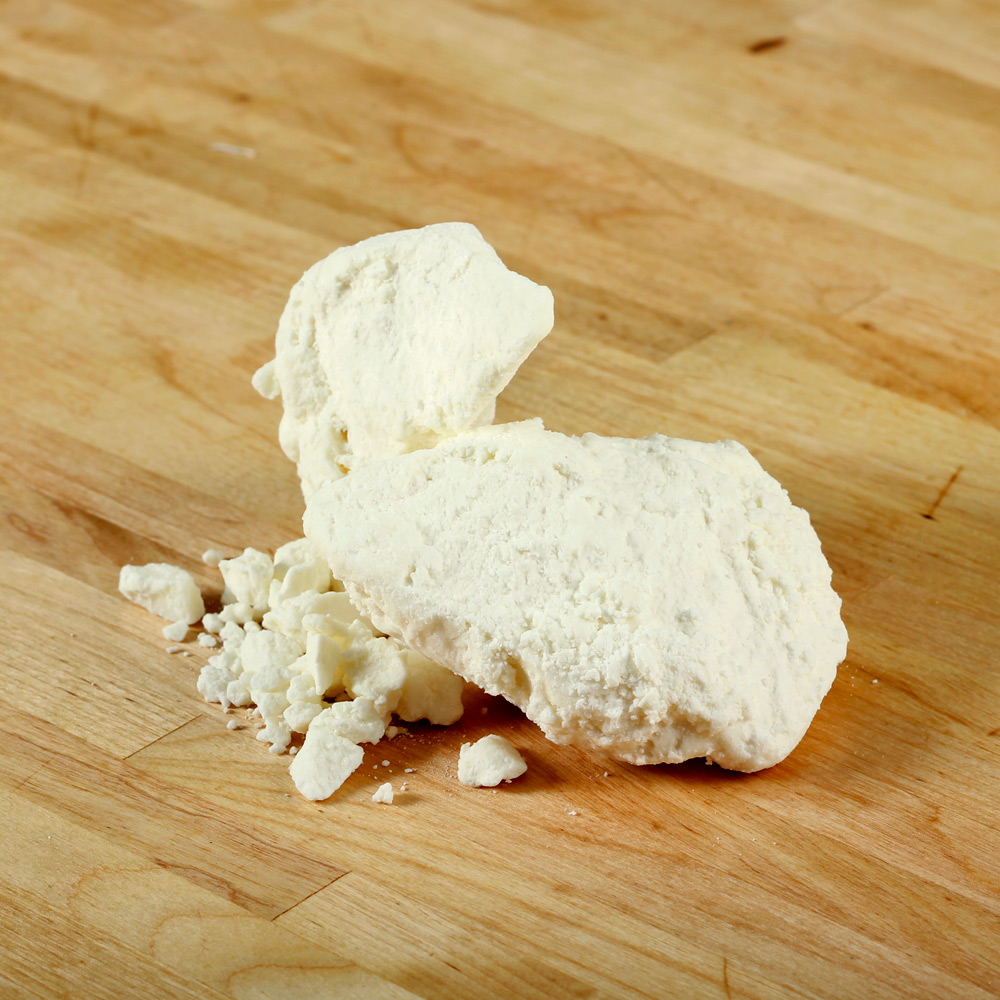
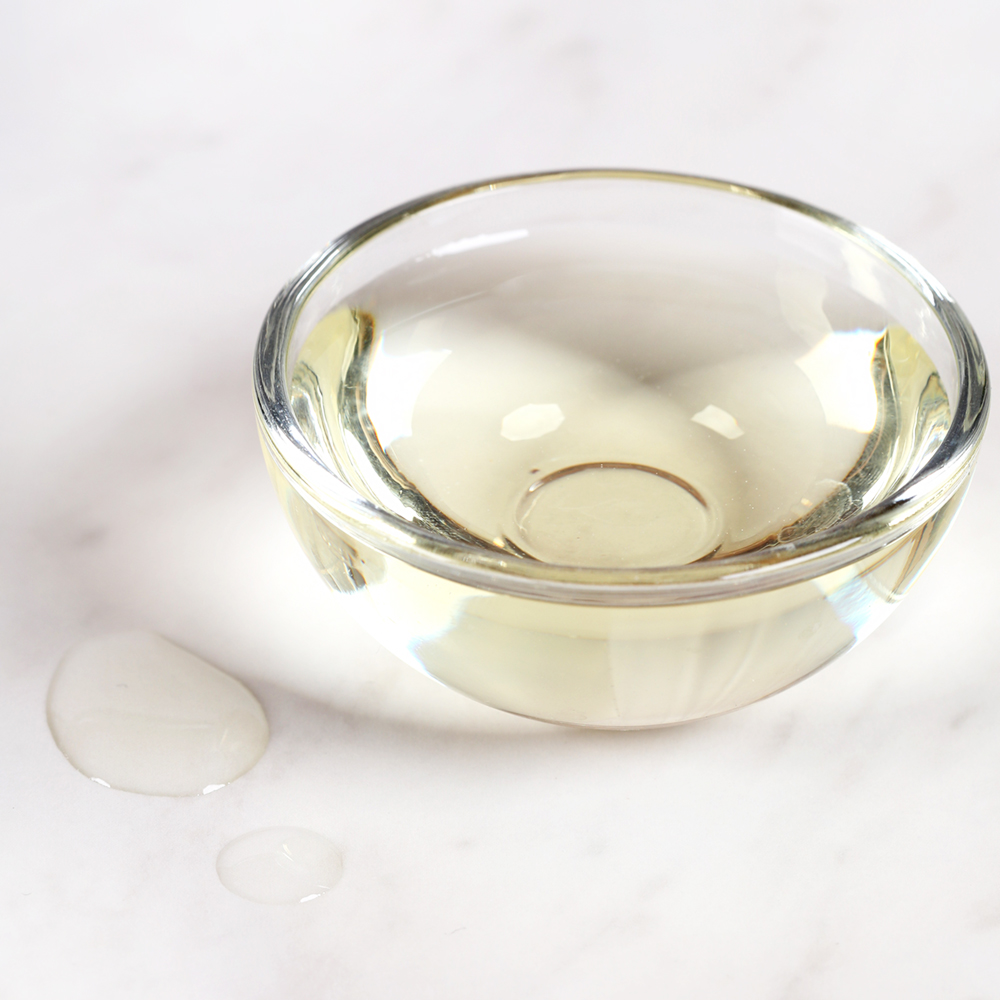
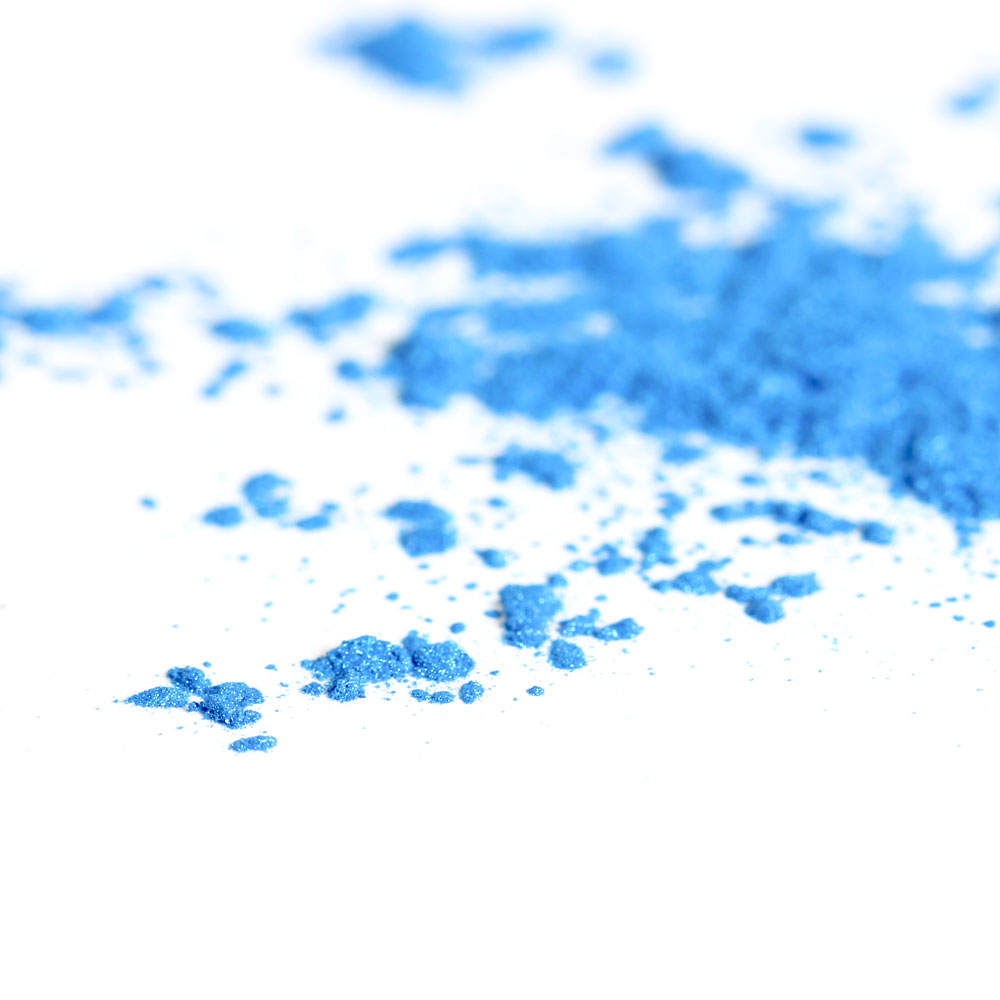
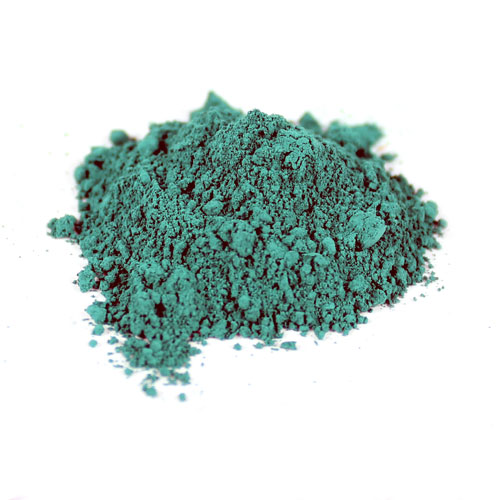
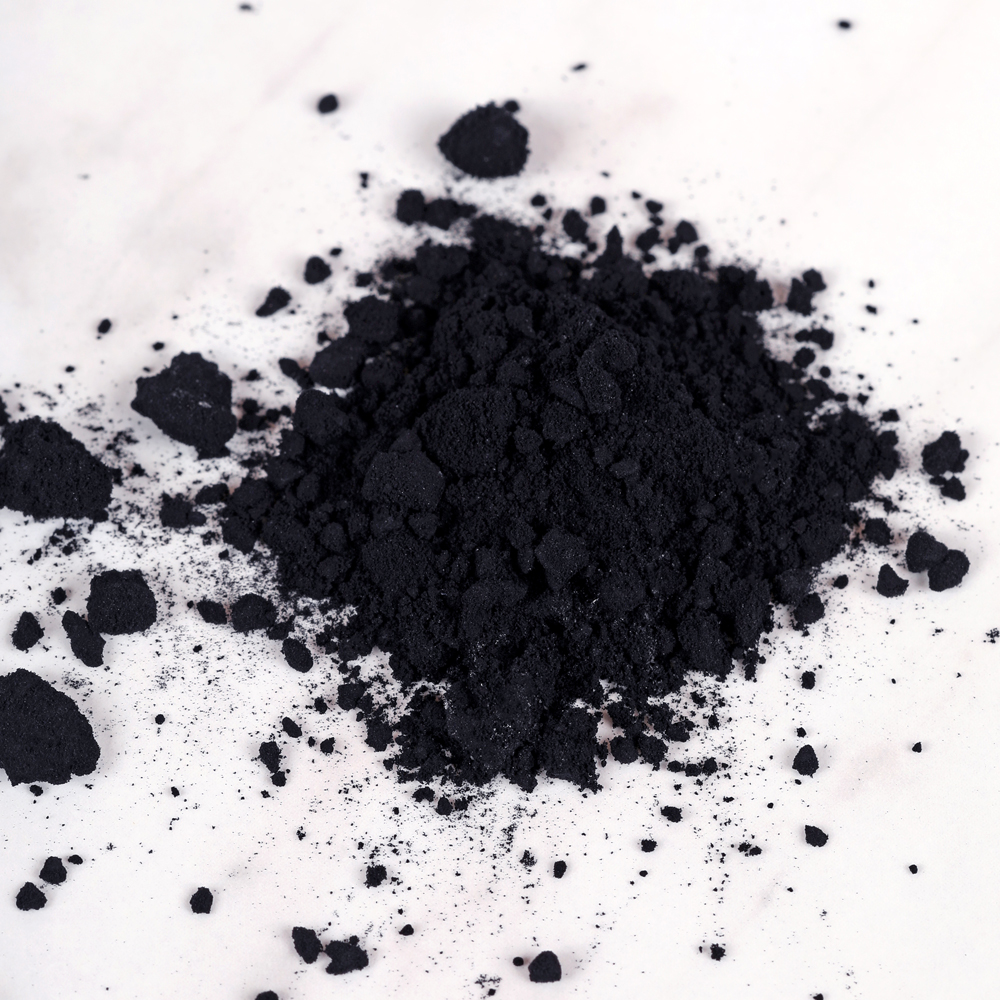
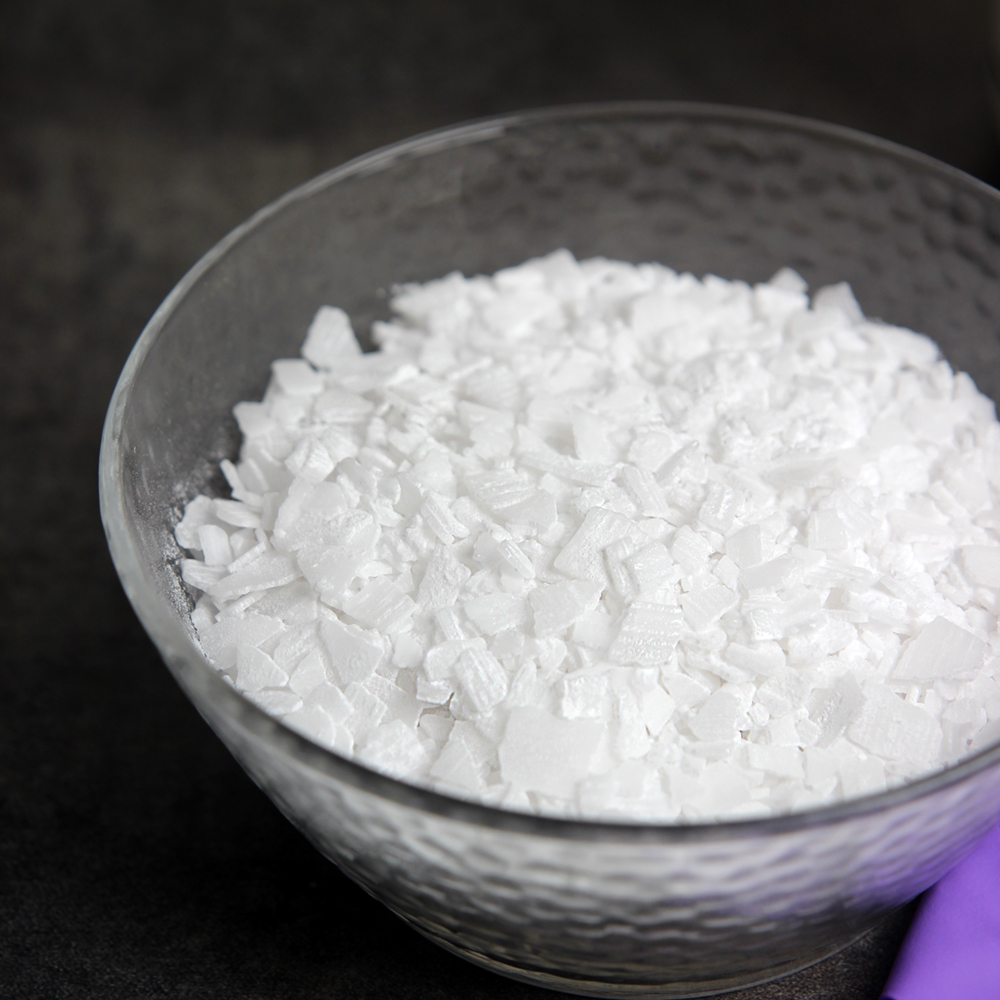
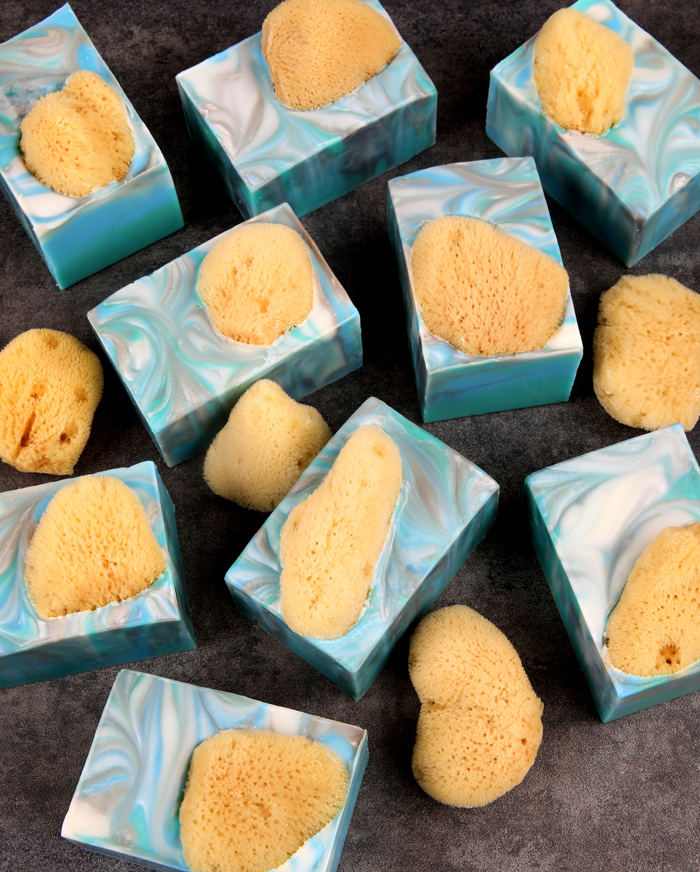

 THREE: Split the soap into four containers and add the following amounts of dispersed colorants. Use a whisk to fully mix them in.
THREE: Split the soap into four containers and add the following amounts of dispersed colorants. Use a whisk to fully mix them in. FOUR: Pour the 2.2 ounces of Sea Salt Fragrance Oil equally into all the containers (it’s okay to eyeball it). Use a whisk to fully mix in the fragrance oil.
FOUR: Pour the 2.2 ounces of Sea Salt Fragrance Oil equally into all the containers (it’s okay to eyeball it). Use a whisk to fully mix in the fragrance oil. FIVE: Pour some of the first color (it doesn’t matter which) into the mold in long S-curves lengthwise. Pour some of a different color in the mold, still going lengthwise. Continue pouring alternate colors lengthwise into the mold. If the soap starts to thicken, mix with a whisk to loosen it up.
FIVE: Pour some of the first color (it doesn’t matter which) into the mold in long S-curves lengthwise. Pour some of a different color in the mold, still going lengthwise. Continue pouring alternate colors lengthwise into the mold. If the soap starts to thicken, mix with a whisk to loosen it up.

 SIX: For the first few passes of color, the order doesn’t really matter. Once the mold is about half full, take more care to differentiate the colors to make a more distinct pattern when you swirl them. Once you get to the top of the soap, pour so that each color is showing.
SIX: For the first few passes of color, the order doesn’t really matter. Once the mold is about half full, take more care to differentiate the colors to make a more distinct pattern when you swirl them. Once you get to the top of the soap, pour so that each color is showing.
 SEVEN: Once all the soap is in the mold, tap it firmly on the counter to get rid of bubbles. Insert a chopstick or dowel into the very top of the soap and drag the tool so that it crosses the lines created by the soap. Continue this S-curve down the entire length of the mold.
SEVEN: Once all the soap is in the mold, tap it firmly on the counter to get rid of bubbles. Insert a chopstick or dowel into the very top of the soap and drag the tool so that it crosses the lines created by the soap. Continue this S-curve down the entire length of the mold. EIGHT: Insert the chopstick again, and move it up and down the mold in small wavy lines.
EIGHT: Insert the chopstick again, and move it up and down the mold in small wavy lines. EIGHT: Insert the dividers into the soap. This drags the design down the sides of the bars. If you prefer to cut your bars, you can skip this step.
EIGHT: Insert the dividers into the soap. This drags the design down the sides of the bars. If you prefer to cut your bars, you can skip this step. NINE: Insert a dry silk sea sponge into each bar. We placed most of them toward one side of the bar to allow the swirl to be seen.
NINE: Insert a dry silk sea sponge into each bar. We placed most of them toward one side of the bar to allow the swirl to be seen.
 TEN: Allow the soap to stay in the mold for 2-3 days. To remove, take out the silicone liner and pull on the sides to break the airlock. Push the soap up from the bottom to release. If the bottom of the soap is still soft, let it harden in the dividers for a few more days.
TEN: Allow the soap to stay in the mold for 2-3 days. To remove, take out the silicone liner and pull on the sides to break the airlock. Push the soap up from the bottom to release. If the bottom of the soap is still soft, let it harden in the dividers for a few more days.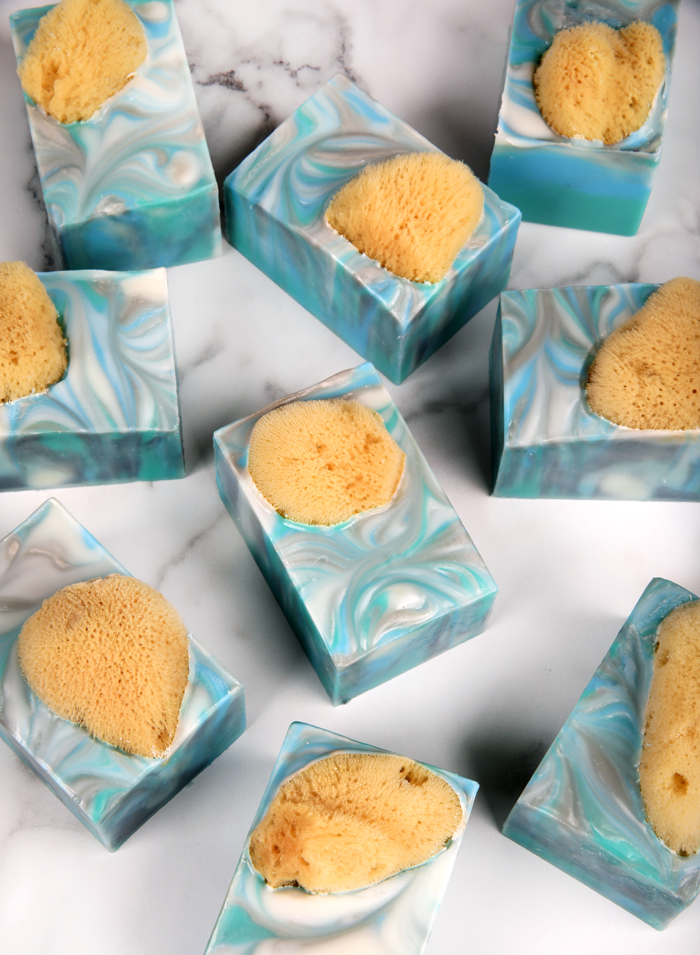
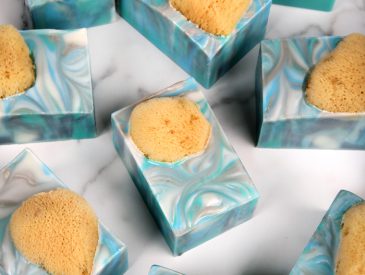
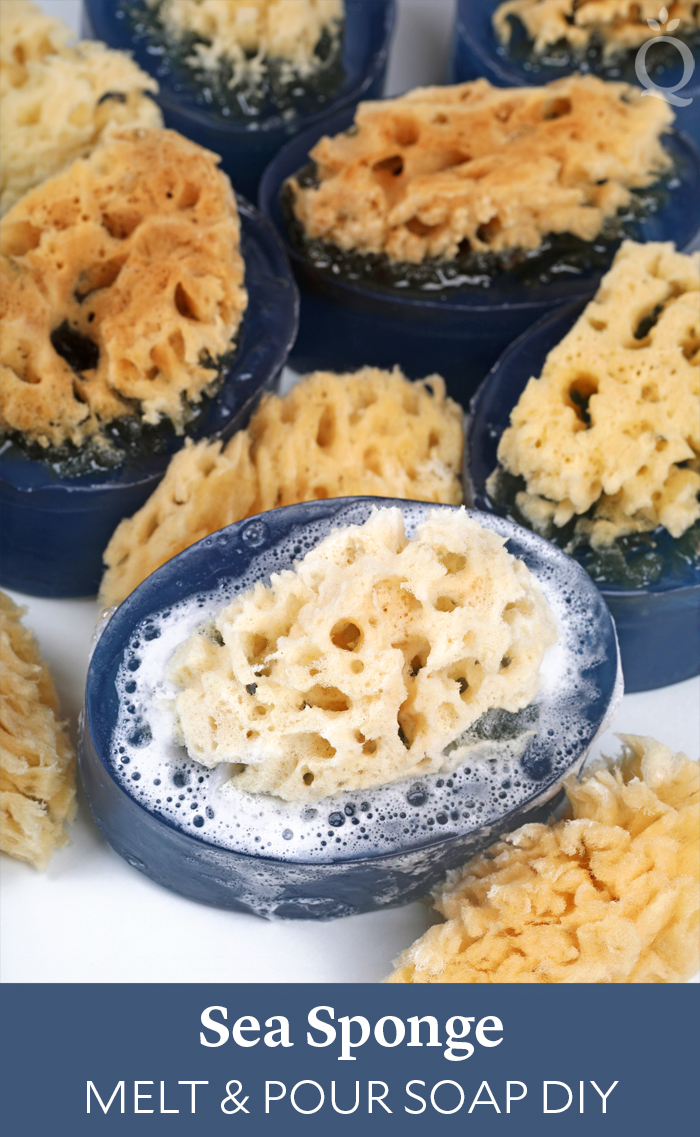
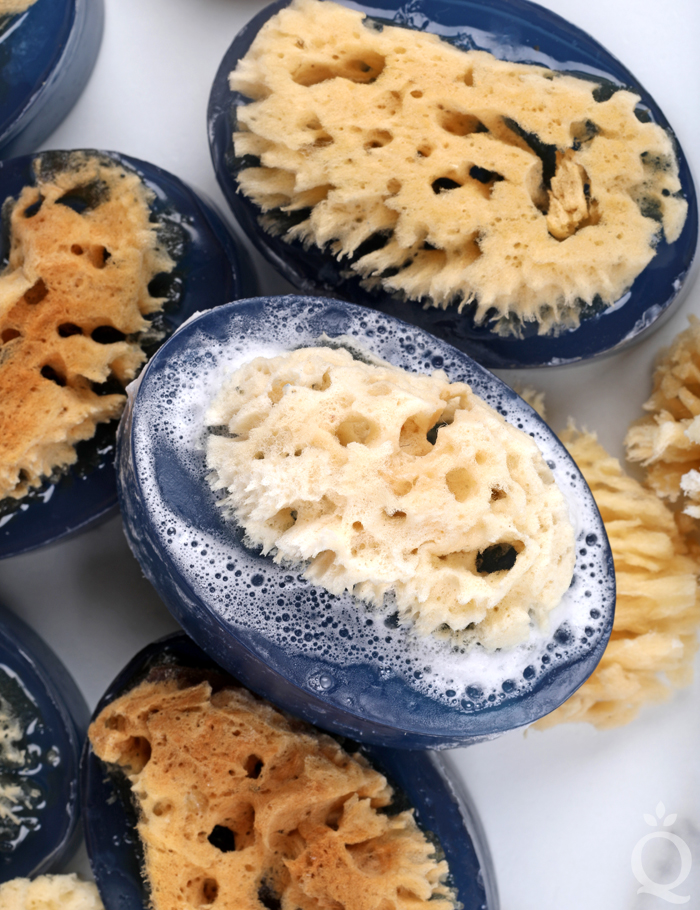
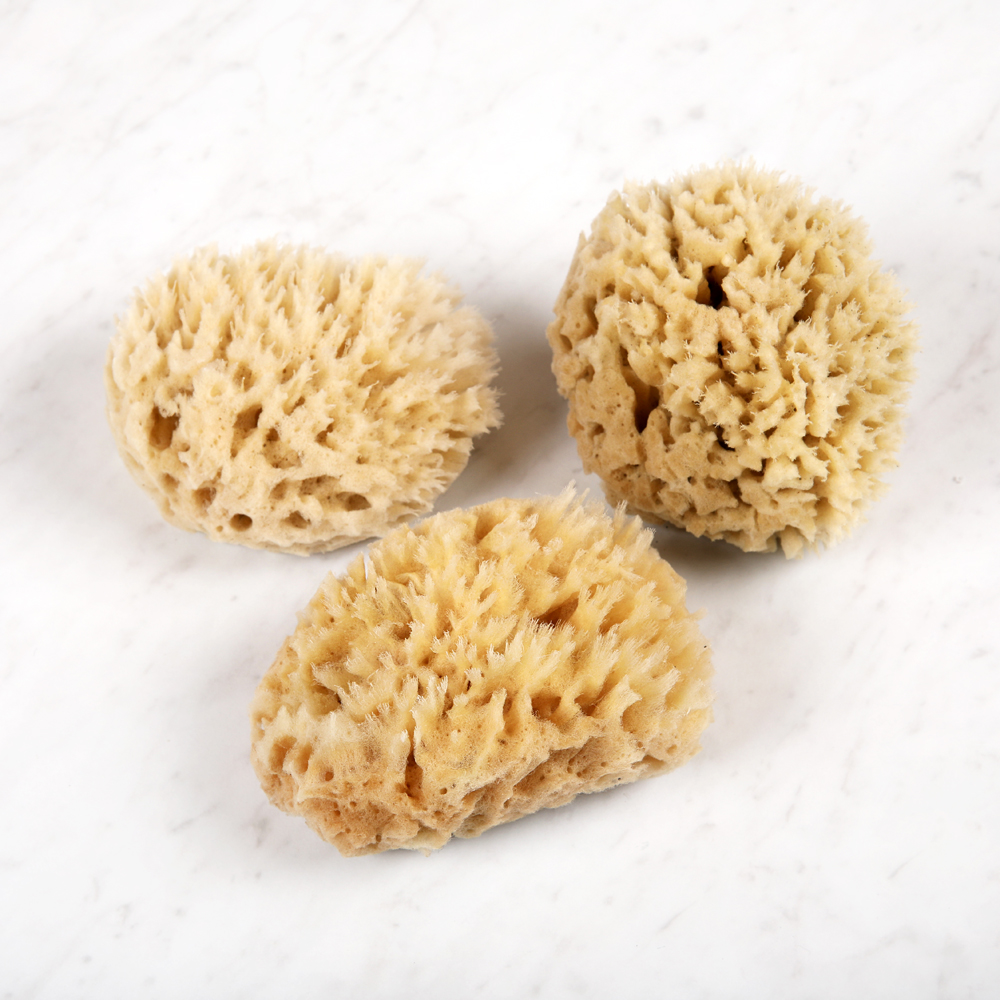
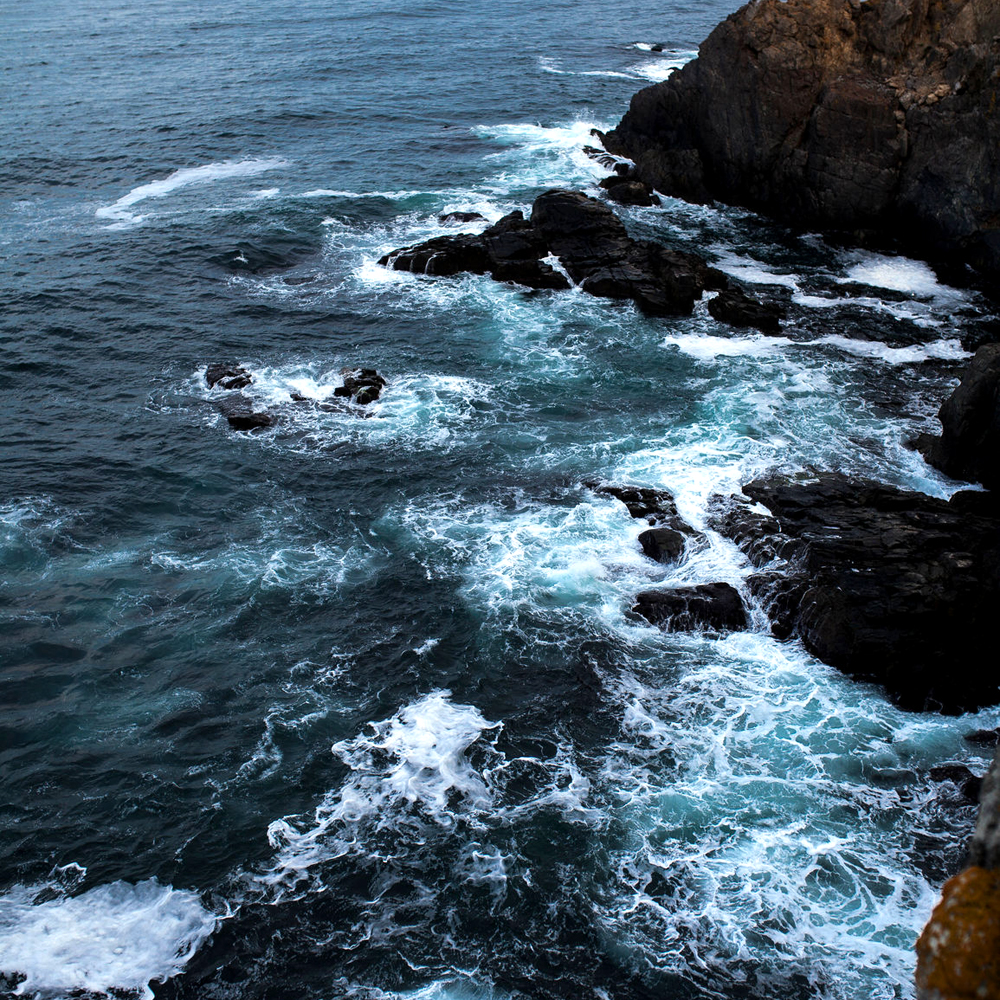
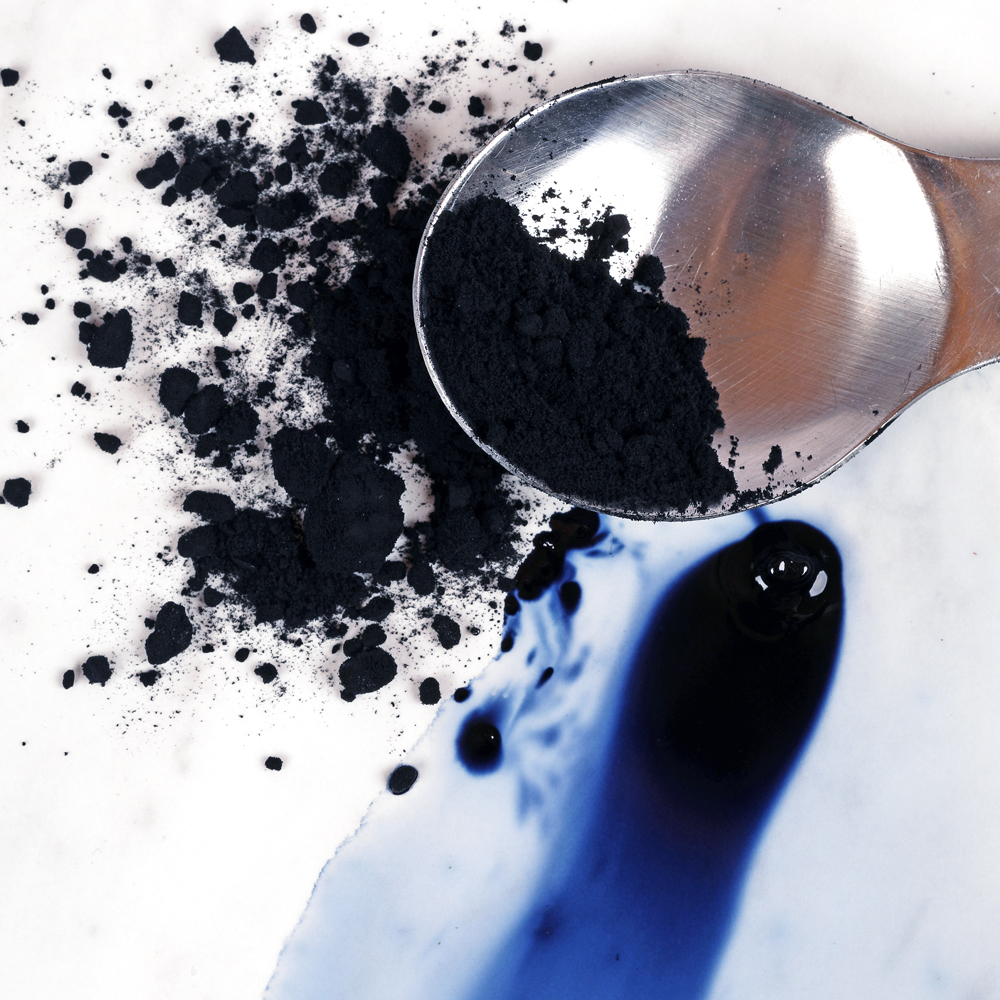
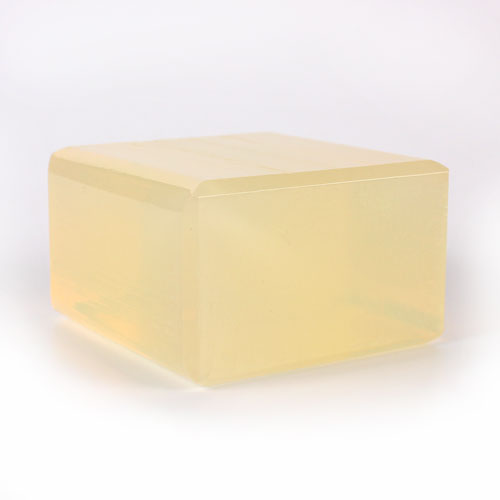
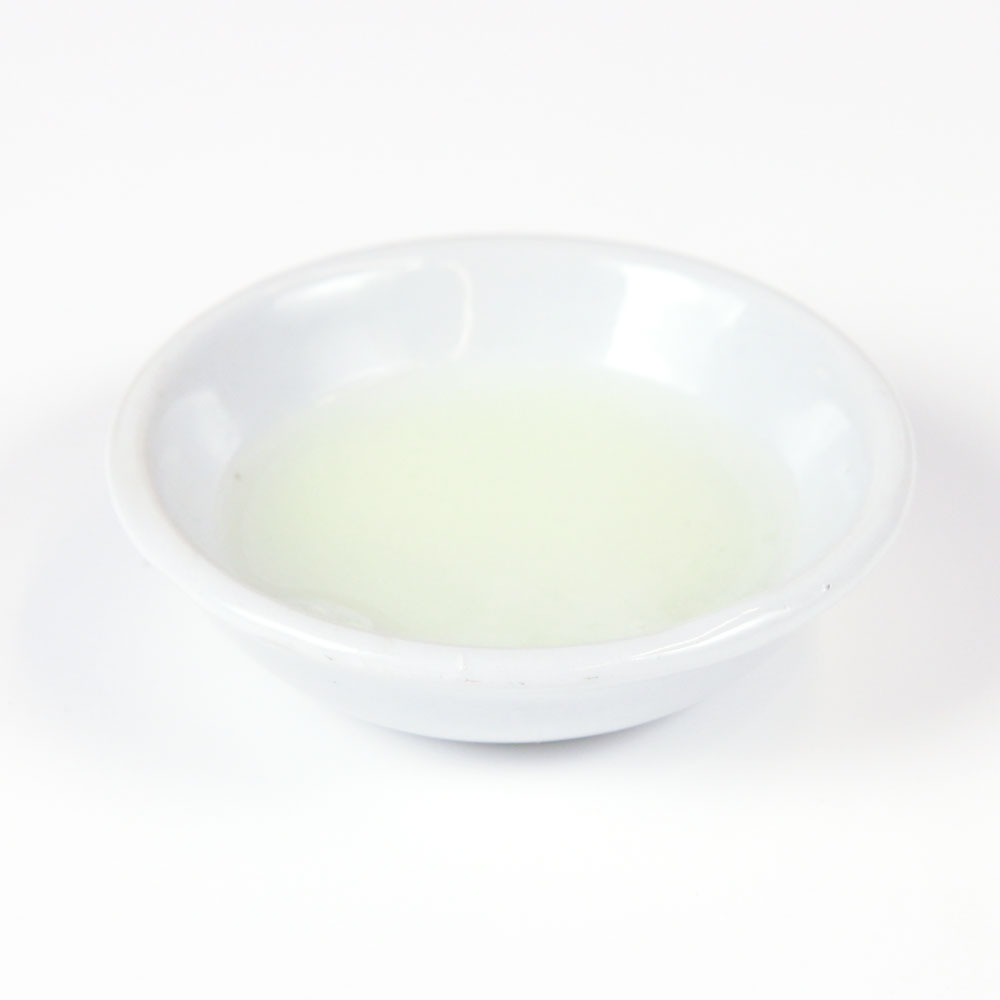
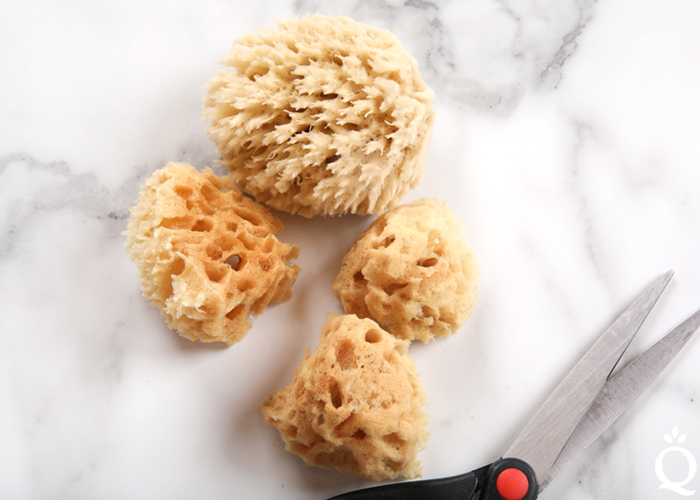
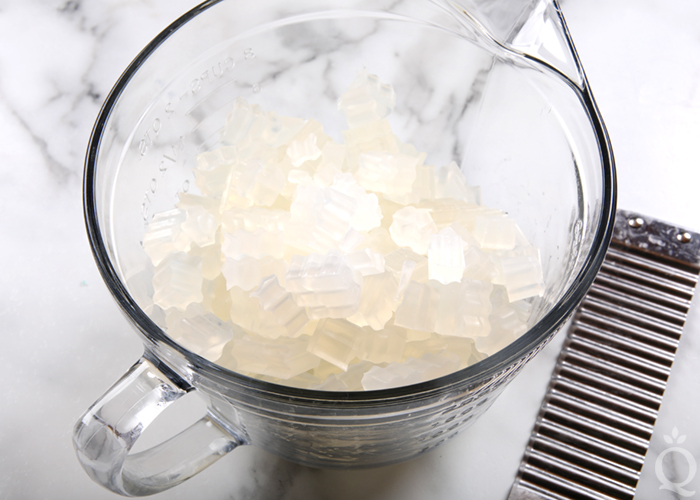 TWO: While the soap is melting, mix together 1/16th teaspoon of jagua blue extract and 2 teaspoons of 99% isopropyl alcohol. Mixing the jagua blue extract with alcohol helps prevent clumps.
TWO: While the soap is melting, mix together 1/16th teaspoon of jagua blue extract and 2 teaspoons of 99% isopropyl alcohol. Mixing the jagua blue extract with alcohol helps prevent clumps.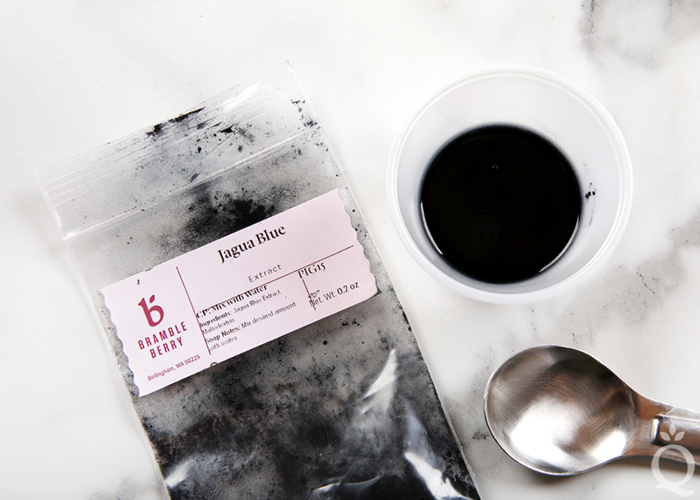 THREE: Once the soap is melted, pour all of the dispersed jagua blue extract into the soap and stir until completely incorporated.
THREE: Once the soap is melted, pour all of the dispersed jagua blue extract into the soap and stir until completely incorporated.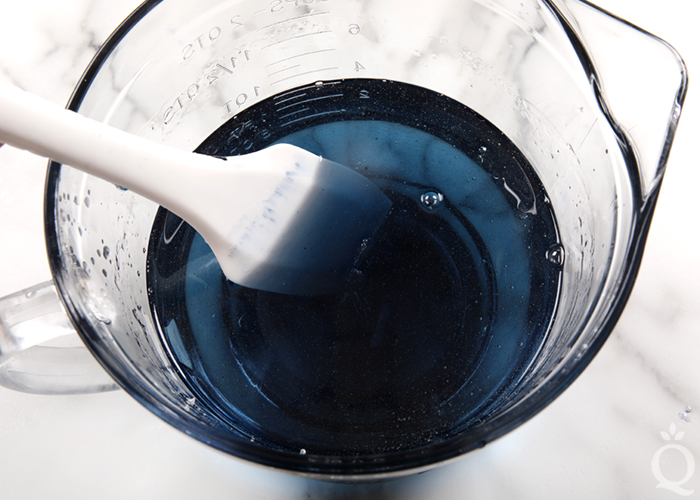 FOUR: Add 0.6 ounces of Midnight Waters Fragrance Oil and 0.6 ounces of Vanilla Color Stabilizer. Mix together.
FOUR: Add 0.6 ounces of Midnight Waters Fragrance Oil and 0.6 ounces of Vanilla Color Stabilizer. Mix together.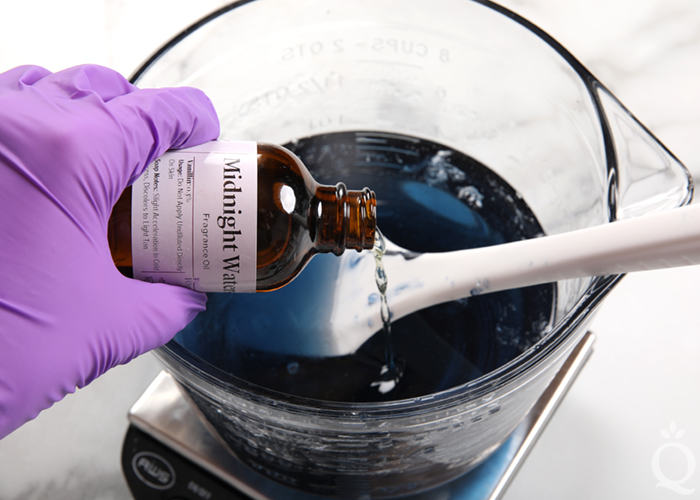 FIVE: Fill each cavity of the mold about 80% full. Spritz the top with alcohol to help get rid of bubbles. Allow this layer of soap to harden and cool for about 15-20 minutes. The soap needs to build a strong enough skin to support the sea sponge.
FIVE: Fill each cavity of the mold about 80% full. Spritz the top with alcohol to help get rid of bubbles. Allow this layer of soap to harden and cool for about 15-20 minutes. The soap needs to build a strong enough skin to support the sea sponge.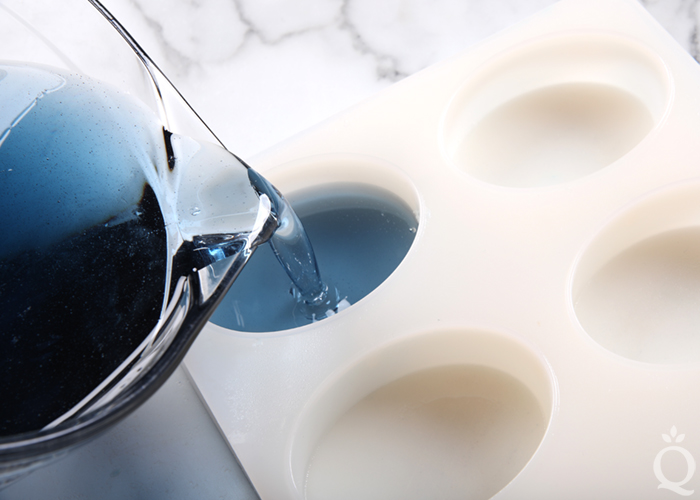 SIX: Once the soap has slightly hardened and formed a strong skin on top, reheat the remaining soap using 15 second bursts. Spritz all the cavities with 99% isopropyl alcohol to help the layers stick together.
SIX: Once the soap has slightly hardened and formed a strong skin on top, reheat the remaining soap using 15 second bursts. Spritz all the cavities with 99% isopropyl alcohol to help the layers stick together.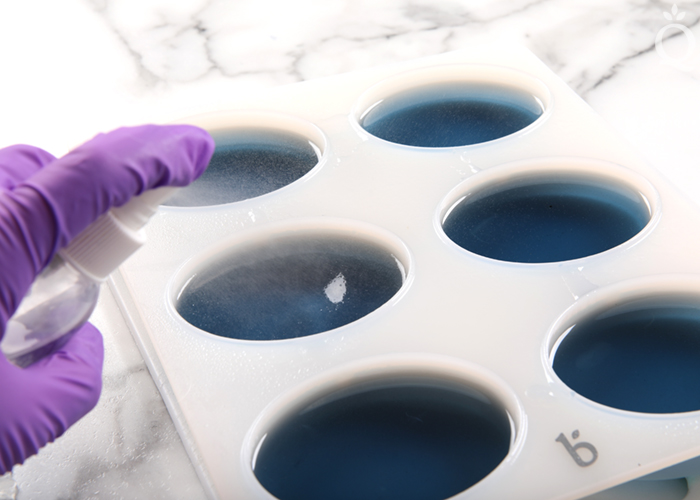 SEVEN: Fill the cavity with melted soap. Once full, place the sea sponges into the soap. Spritz the soap with 99% isopropyl alcohol to get rid of any bubbles. Continue for each cavity.
SEVEN: Fill the cavity with melted soap. Once full, place the sea sponges into the soap. Spritz the soap with 99% isopropyl alcohol to get rid of any bubbles. Continue for each cavity.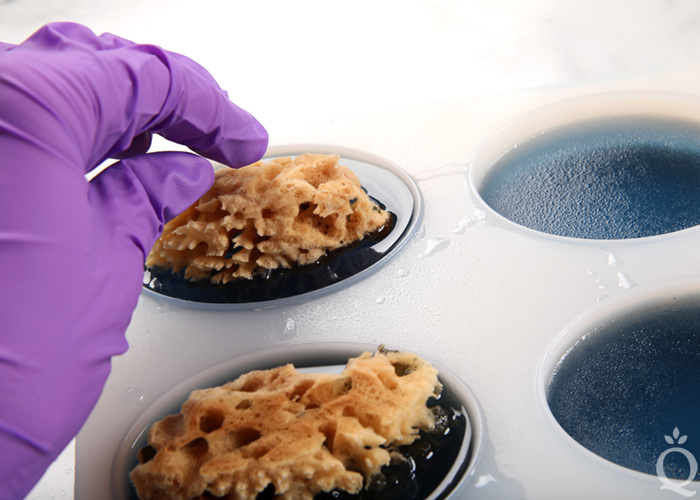 EIGHT: Allow the soap to fully cool and harden for several hours or up to overnight. Once fully cool, remove the soap from the mold and enjoy. To prevent
EIGHT: Allow the soap to fully cool and harden for several hours or up to overnight. Once fully cool, remove the soap from the mold and enjoy. To prevent 